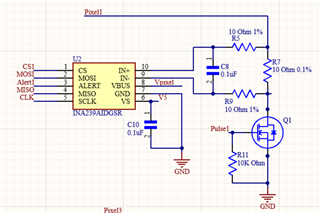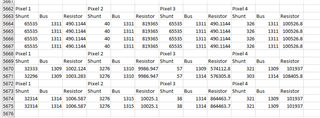Other Parts Discussed in Thread: TI-SCB
Hello,
I am noticing an oddity with the IN239 where after a power-reset the shunt value readings are incorrect or shorted out. This happens for either single-shot or continuous mode for 280us conversion time and 128 averages. I can then remedy the issue by reconfiguring to 50us minimum and no averaging and then reflash my code at 280us-128avgs and it works just fine again. Any suggestions?
Reading config register values:
config: 0x0010
adc_config: 0x06C4
Shunt_calib: 0x0FD7
diag_alert: 0xE001
Things I've tried:
1) Software power reset the INA before writing configuration values.
2) Writing zeros to the adc_config register before writing my parameters in.
3) Writing 50us no averaging into the adc_config first and then 280-128 in after.




